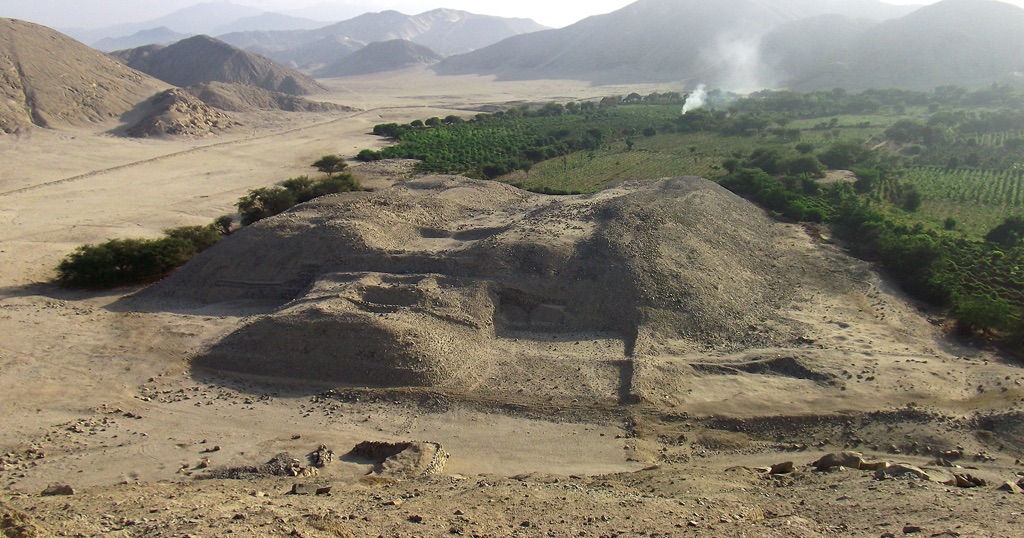Summary
Discovering Sechin Bajo
Sechin Bajo, one of the oldest archaeological sites in the Americas, lies in the Casma Valley of Peru. It astonishes with its intricate stone carvings and ancient plazas. Recent excavations revealed its staggering age: some parts date back to 3500 BCE. This makes Sechin Bajo a key site for understanding the pre-ceramic period. Visitors marvel at its antediluvian monuments that have withstood the test of time.
Get your dose of History via Email
The Architectural Masterpieces of Sechin Bajo
This historic gem showcases remarkable construction techniques of ancient societies. Unique among these is the sunken circular plaza, believed to be a ceremonial site. Its precise alignment with the sun’s path suggests advanced astronomical knowledge. The site’s builders crafted buildings and a complex urban layout without metal tools or the wheel. Exploring Sechin Bajo offers a glimpse into the ingenuity of our ancestors.
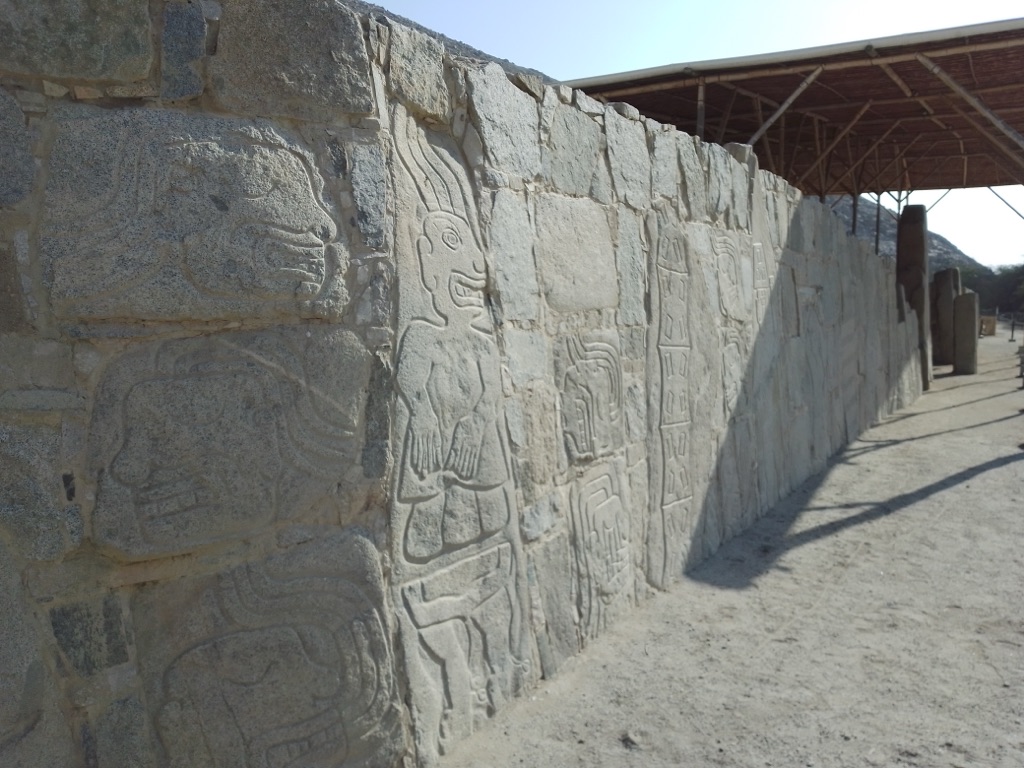
Sechin Bajo’s Role in Historical Understanding
The site contributes significantly to our perception of pre-Columbian cultures. It shows a civilization that flourished in coastal Peru long before famous cultures like the Inca. Puzzles about its inhabitants linger, but artifacts such as stone tools and ceramics give clues. Sechin Bajo’s legacy continues as research provides fresh insights into this enigmatic culture. It stands as a testament to human resilience and innovation.
Historical Background of Sechin Bajo
Sechin Bajo is an awe-inspiring archaeological site that takes us back into deep historical periods. Located in the Casma Valley of Peru, it dates back to over 5,000 years. Researchers have unearthed evidence of human activity as early as 3500 BCE. This makes Sechin Bajo one of the oldest centers of civilization in the Americas. Initially, the site might have served as a religious and political center. Its ancient builders left behind a legacy written in stone and earth.
Unearthing the Pre-Ceramic Period
The site provides a window into the pre-ceramic period, before pottery became a mark of cultural sophistication. In Sechin Bajo, archaeologists have discovered vast stone structures. These include residential units and plazas without a trace of ceramics. Instead, they found stone tools and remnants of plant-based industries. The earthen architecture and monumental stone carvings hint at a complex, organized society. Its dominance in the region must have been quite profound.
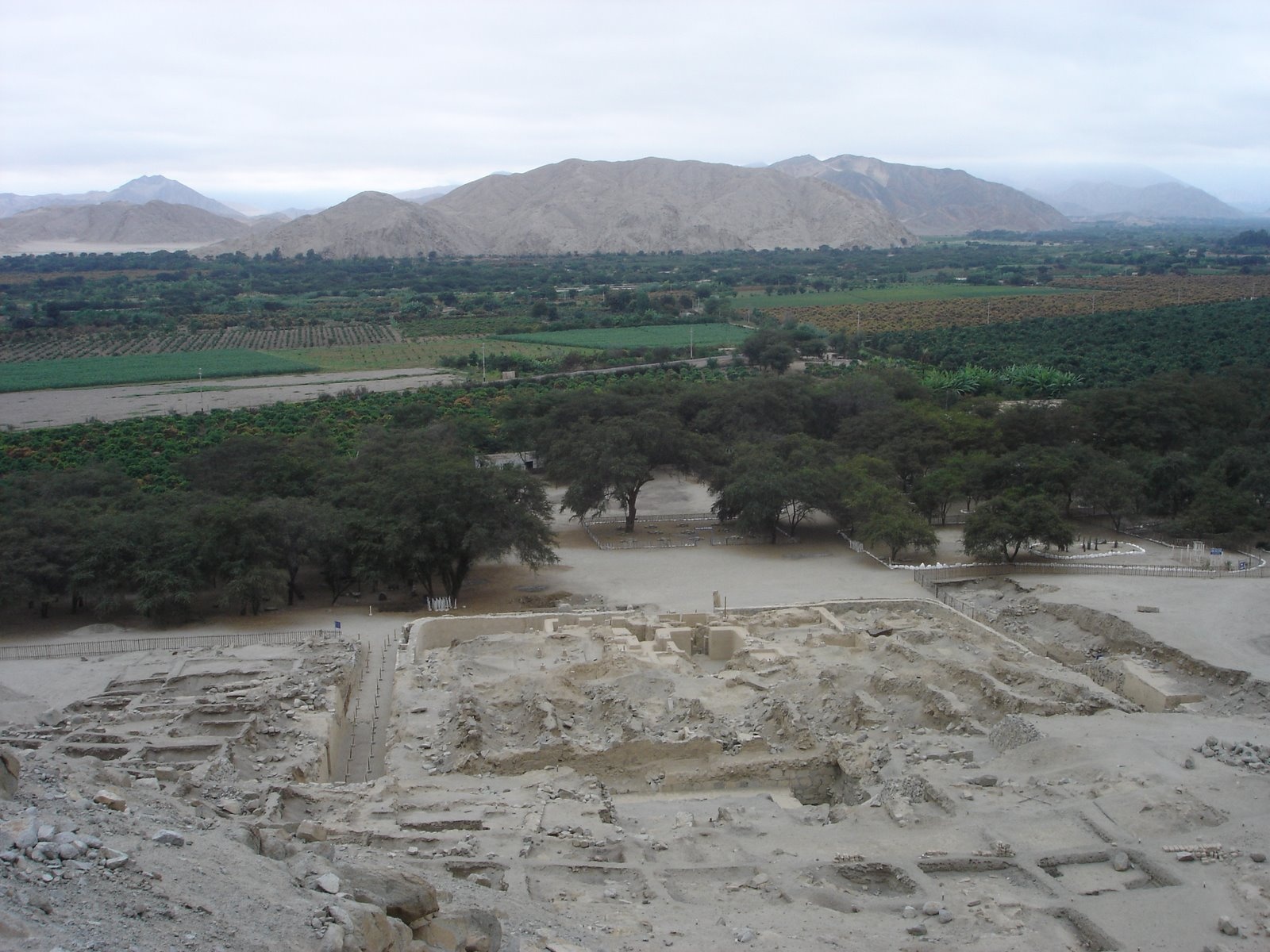
The Artistic Legacy of Stone
Astonishingly accurate stone carvings are among Sechin Bajo’s most remarkable features. The monoliths and friezes depict a variety of motifs. These include warfare, human figures, and cosmic symbols. Researchers believe that these carvings depict rituals or historical events. They give us a non-written record of the beliefs and practices of a lost civilization. Their craftsmanship reflects a high level of artistic and symbolic thinking for their time.
Sechin Bajo’s Sociocultural Significance
This site is not just a collection of ruins but a bridge to an ancient past. It tells us about the social and cultural dynamics of the Sechin people. Their societal structures were likely intricate, considering the scale and planning of their city. The ruins hint at a hierarchy and a society capable of undertaking massive projects. Trade, religion, and governance were all parts of the Sechin Bajo civilization’s life.
Finally, Sechin Bajo continues to fascinate not only as an exhibit of ancient life but also as a subject of ongoing study. Recent findings suggest that this site, alongside others in the area, formed a continuous cultural network. As archaeologists uncover more, our understanding grows. Sechin Bajo serves as a key to deciphering human history in the Americas. It remains an enduring emblem of human civilization’s ability to build, create, and stand the test of time.
The Discovery of Sechin Bajo
Initial Unveiling
The journey to uncover Sechin Bajo started in the 1930s. Peruvian archaeologist Julio C. Tello first shed light on its existence. His pioneering work paved the way for future excavations. Yet, it remained relatively unexplored for decades. Over time, local farmers knew of its presence as they worked the land that concealed its secrets.
Amid the cradle of ancient civilization, Sechin Bajo lay waiting. It wasn’t until the late 20th century that investigations reignited. Teams came together to delve deeper into its rich past. They sought to uncover its origins and the mysteries it held.
Archaeological Breakthroughs
A major breakthrough occurred in 2008. An archaeological team led by Dr. Peter Fuchs made a startling discovery. They unearthed a plaza dating back to 3500 BCE. This finding pushed back timelines of Andean civilization. It placed Sechin Bajo among the oldest archaeological sites in the Americas.
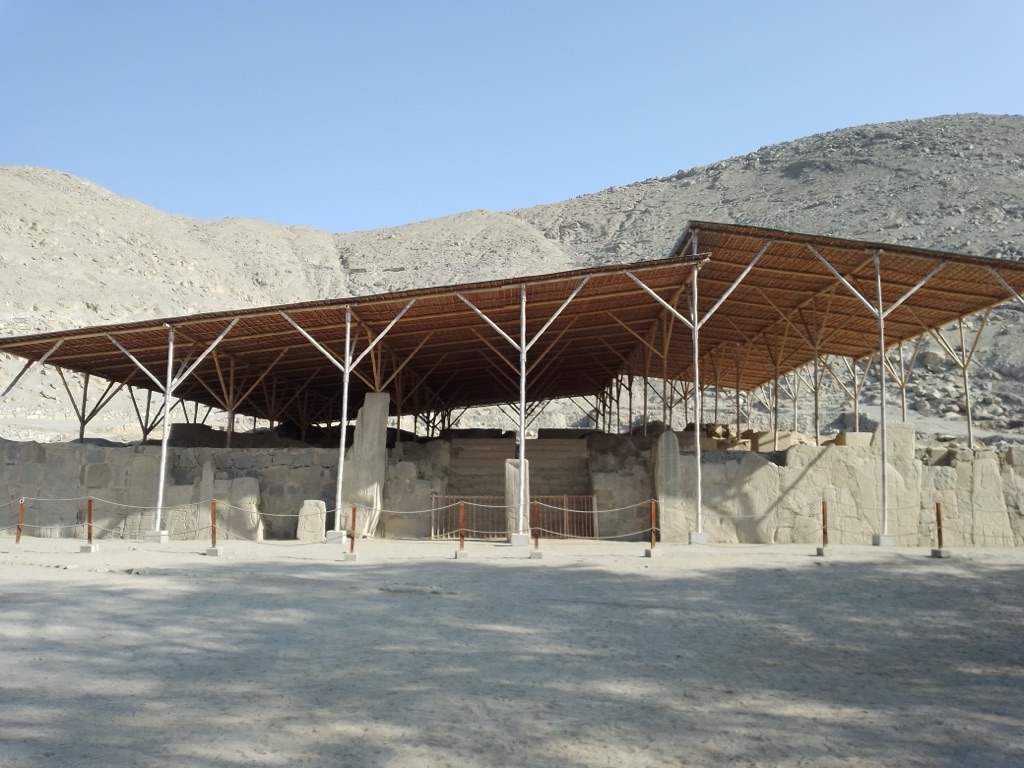
Gaining Recognition
As the scope of Sechin Bajo’s significance became clear, the world took notice. The site quickly gained prominence in historical circles. It provided a crucial piece of the human history puzzle in South America. The findings at Sechin Bajo challenged long-held beliefs. It became a symbol of early urbanism and architectural prowess.
In the wake of these discoveries, research intensified. More areas of the site opened. The team found stone monuments and a variety of relics. These artifacts charted a timeline of society and culture pre-dating the Incas. Sechin Bajo stands as a testament to the region’s ancient innovators. Their legacy lives on in the stones and earth of this enigmatic site.
Cultural Significance, Dating methods, Theories and Interpretations
Revealing Ancient Cultural Impact
Sechin Bajo stands as a monumental testament to the ancient peoples of Peru’s Casma Valley. Its stone artifacts and structures offer a glimpse into rituals and societal structures. This site illustrates the high level of social organization and cultural development way before the Inca Empire. The sophistication of Sechin Bajo’s urban design speaks to a well-coordinated society deeply engaged in ceremonial practices.
Advanced dating methods have played a pivotal role in understanding Sechin Bajo. Radiocarbon dating has been crucial in establishing the age of the structures. Soil samples containing organic material offer a time stamp of human activity. These methods have revealed that some areas of the site date back to 3500 BCE. This makes Sechin Bajo one of the earliest known urban centers in the Americas.
Theories on Sechin Bajo’s Origins
Theories abound when it comes to the origins and purpose of Sechin Bajo. Some researchers believe the site was primarily a ceremonial complex. Others argue it was a center of political power or a hub for trade and commerce. The true purpose remains a source of scholarly debate. This underlines the complexity of the ancient society that inhabited the valley.
Interpreting Historical Enigma
The carvings and layout of Sechin Bajo leave much to interpretation. The circular plazas and stone monoliths may have astronomical significance. They could have been used to mark solar events. These interpretations add a rich layer to our understanding of prehistoric times. They suggest that the inhabitants had advanced knowledge of astronomy and seasonal cycles.
An examination of the cultural significance of Sechin Bajo reveals its vital role in our historical narrative. It embodies an era that saw the dawn of city-states. This site provides evidence of sophisticated social practices in the Americas. Sechin Bajo invites us to ponder the rise and fall of a culture that once thrived in the arid valleys of ancient Peru.
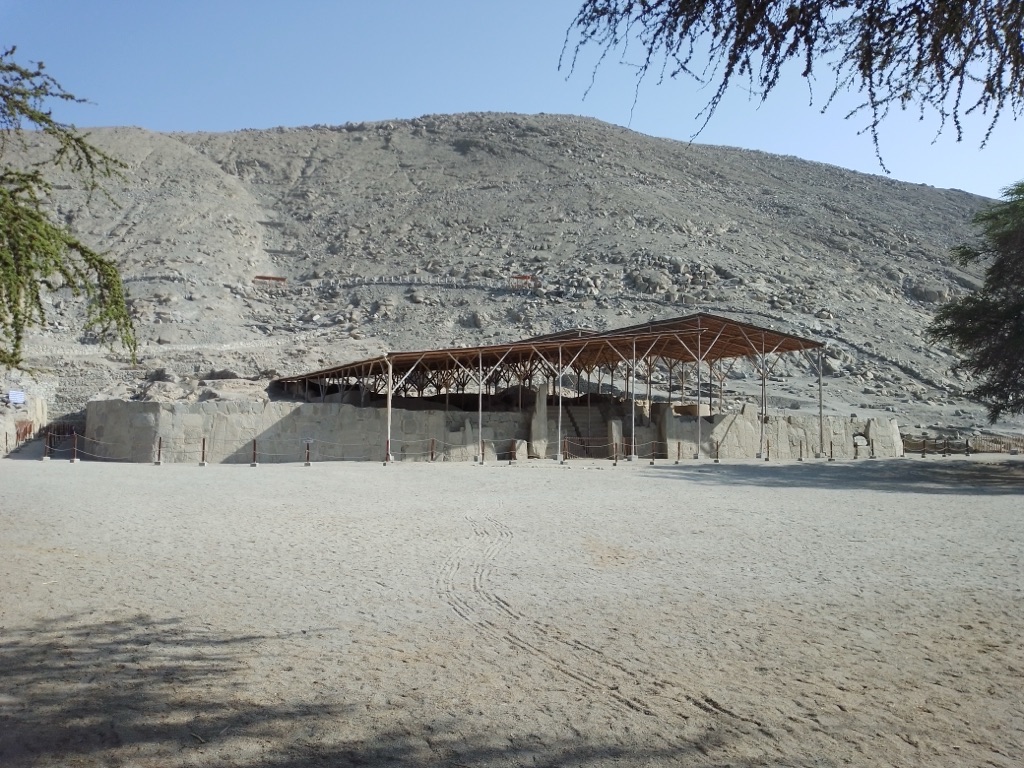
Conclusion and Sources
In the end, Sechin Bajo’s enduring legacy provides a crucial link to our understanding of ancient civilizations. The site’s complexity and advanced design showcase a sophisticated society far preceding notable historical cultures such as the Inca. As a pillar of archaeological significance, Sechin Bajo continues to shed light on the cultural, political, and religious practices of early populations in the Americas. Its discovery and ongoing study underscore the importance of preserving and understanding our shared human history.
For further reading and to validate the information presented in this article, the following sources are recommended:
Or you can check any of these reputable archaeological and historical texts:
Haas, J., Creamer, W., & Ruiz, A. (2004). Dating the Late Archaic occupation of the Norte Chico region in Peru. Nature, 432(7020), 1020-1023.
Shady Solís, R., Haas, J., & Creamer, W. (2001). Dating Caral, a preceramic site in the Supe Valley on the central coast of Peru. Science, 292(5517), 723-726.

